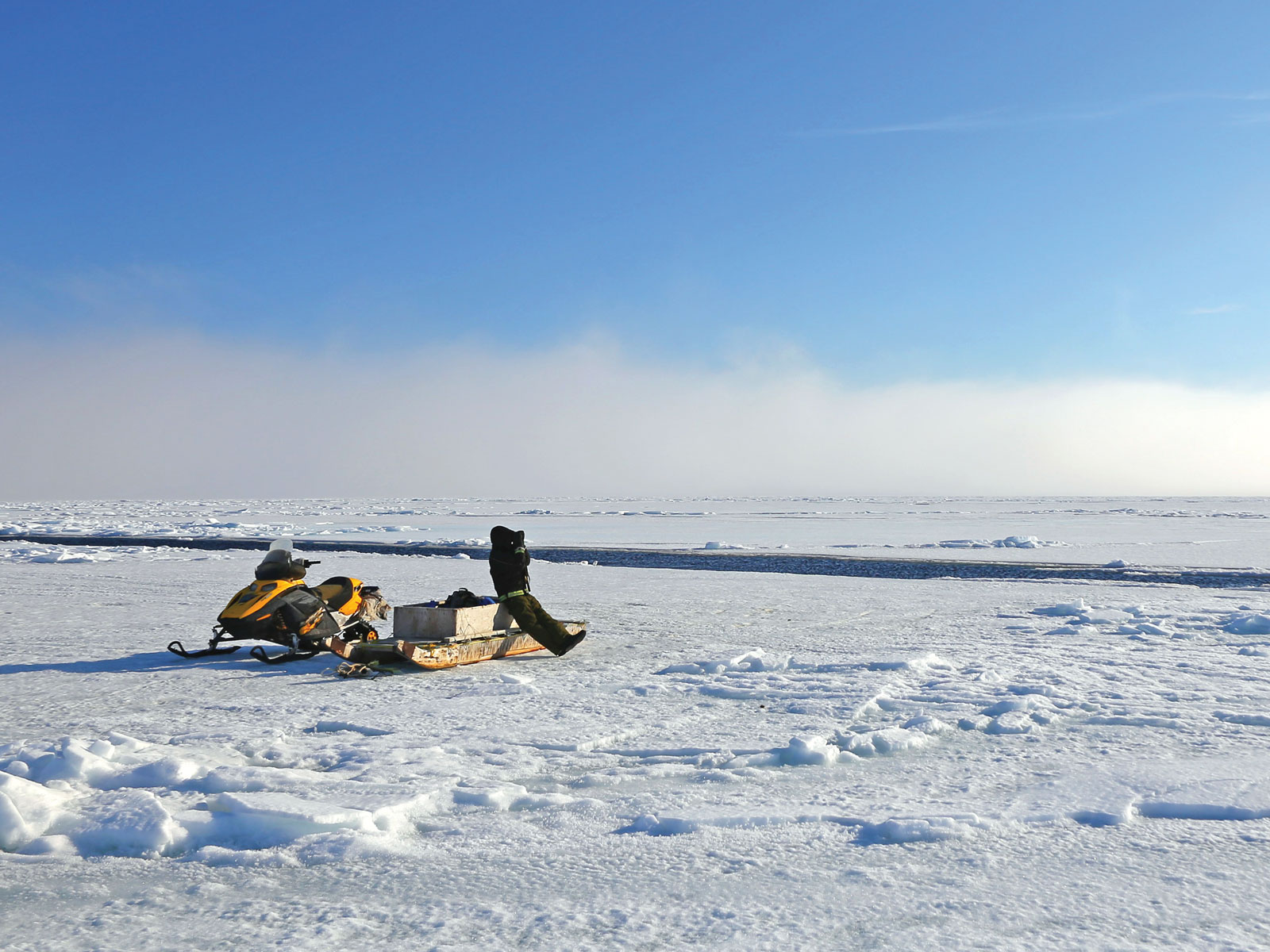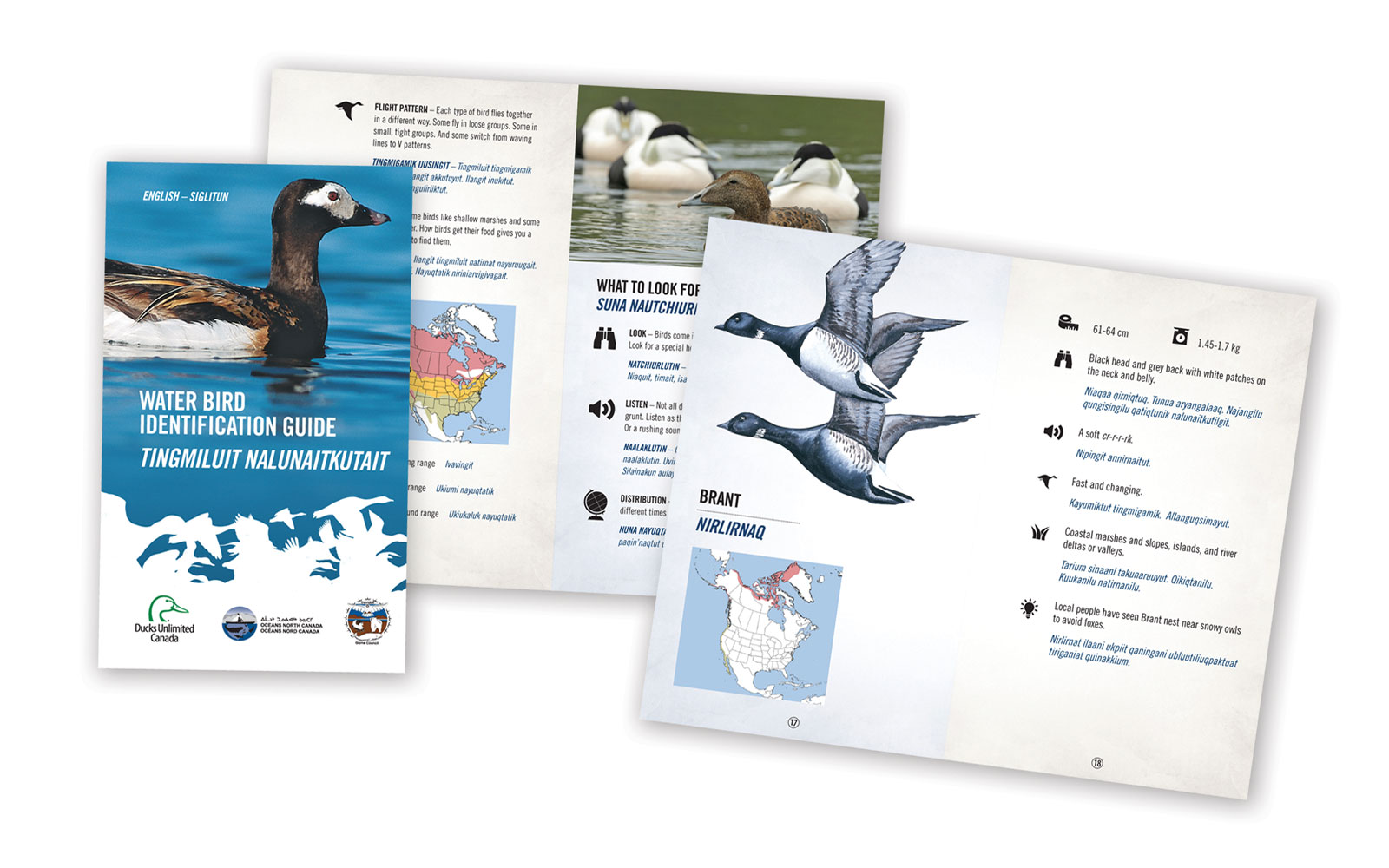Bridging the language gap
It’s hard to stump a DUC biologist when it comes to identifying waterfowl, but a group of Inuvialuit came close.

Residents of the hamlet of Ulukhaktok, N.W.T., told the visiting biologist about a duck that appeared to spring straight up from the water as it took flight. They named it—appropriately—a hover duck. With a lot of back and forth, and input from other residents, Arctic bird biologist Jeffrey Ball realized a hover duck was in fact a mallard.
The anecdote helps explain the importance of a project that will help DUC bridge language gaps to better collaborate with Indigenous peoples. Residents of the Inuvialuit Settlement Region, which includes Ulukhaktok, now have a water bird identification guide that has been translated—with support of members of their own communities—from English into three dialects spoken in the area.
The project was sponsored by DUC, Oceans North Canada and the Inuvialuit Game Council, who have a shared interest to protect birds and bird habitat. Together, they worked with the Inuvialuit Cultural Resource Centre on the translation and editing of the guide.
“The guide focuses on birds found in wetland and near-shore marine habitats, both of which are areas of conservation interest to the project’s partners,” says Ball, a former biologist with DUC’s national boreal program who now works for Environment and Climate Change Canada.
It will also help DUC and Oceans North to better work with the Inuvialuit who have the legal right to manage lands within their settlement region. These lands include key habitats for several species of migratory waterfowl, most notably geese and sea ducks, some of which are of high conservation concern.

©DUC
“This guide will facilitate conversations and actions that promote the conservation of waterfowl and their habitats,” says Ball, who adds there are also cultural benefits. “The guide will foster communication across generations and help preserve the local language, which is a cornerstone of maintaining a culture.”
The guide features 46 species—everything from king eiders, which winter in the Bering and Chukchi Seas off the coasts of Alaska and Russia, to tundra swans, which can winter as far south as Mexico. The 46 birds represent species that residents can expect to see in the Arctic now or that they may encounter in the near future as a result of climate change.
“The hover duck was a fun mystery to crack and it undoubtedly contributed to the relationship building process, but it also derailed our conversation,” says Ball. “This guide will allow DUC to sit down with communities and talk science and conservation, knowing they’re talking the same language when it comes to ducks.”



